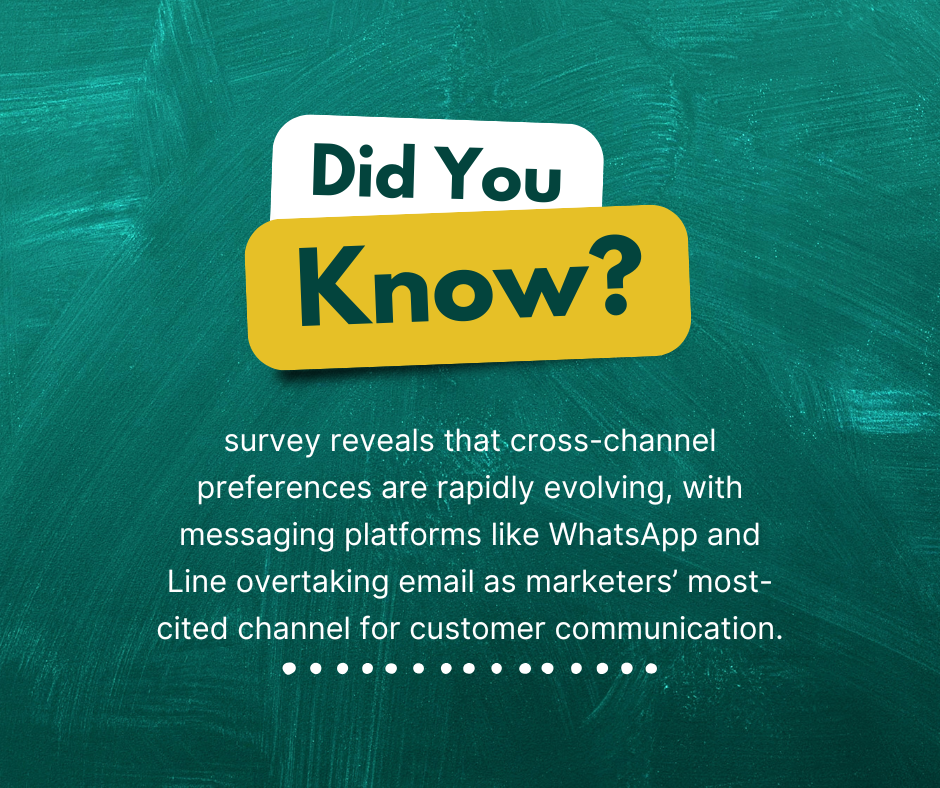Cross-Channel Engagement: A Game Changer for Businesses
As consumers in an increasingly competitive market engage with brands across a range of channels — from social media and websites to email and mobile apps. Businesses must be able to reach out to their audience across all these touchpoints smoothly, a task executed through cross-channel engagement. But why is this so important? Because they demand uniform, personal and time services at every touchpoint. Appropriately executed, a cross-channel engagement strategy can increase brand awareness and deepen customer loyalty, increase conversions-and give strong returns on investment (ROI) across the board.
If your business is to be successful and you want to get the right, long -lasting relationship with customers, then it will be something you need to learn how to use.
What is Cross-Channel Engagement?
Cross-channel engagement is essentially the combo of a business, and it’s customers interacting across multiple communication/marketing channels. Cross-channel strategies, in contrast to multichannel marketing that relies on a range of single-channel platforms working separately, allow these points to knit together into one seamless and cohesive customer journey. The messaging and experience should feel cohesive and relevant to the expectations of your users no matter how they are interacting — whether it be via email, social media, website or SMS.

Importance of Cross-Channel Engagement for Businesses
1. Delivers a Personalized Customer Experience
The benefit is a business can then personalize content and interactions for every individual, based on how customers are behaving across all available channels. With better personalization, the more attention you get and relatability you have, simply leading to better engagement and conversion. When the experience aligns with their interests and needs, customers feel as if they are taken care of and understood.
2. Boosts Brand Visibility and Consistency
Having presence in all channels strengthens the image of your company, making you top of mind for the customer. Consolidated brand messaging across channels promotes authenticity and reliability. Repeated use of a consistent message over time solidifies brand and logo while helping the enterprise live top-of of thoughts with customers.
3. Customer Loyalty And Increased Value Throughout His Life
The more spontaneous and personal engagement, the more loyalty is likely to remain as much more loyal and continue for recurrent. Repeat customers buy more often and they are more likely to refer to others that increase your business systematically. The engagement of the entire channel can deepen these paths of loyalty, given that 35% of customers in some markets report loyalty of low brands.
4. Enhances Marketing ROI and Campaign Performance
It combines data from all channels to give the US the maximum data points when it comes to customer preferences and campaign performance. Combined analytics can provide businesses with more informed marketing strategies, allow for better resource spread and higher conversion rates.
5. Supports Seamless Customer Journeys
In today’s buying process, most customers are using multiple channels. Cross-channel engagement ensures your messaging is perfectly aligned throughout each and every stage (awareness, consideration, purchase) in the buying journey — betting you as much ROI as possible.
Launching an Efficient Cross-Channel Engagement Strategy
Step 1: Understand Your Audience
Use data analytics tools to understand where your customers are spending their time and how they engage with your brand.
Step 2: Integrate Your Channels
Aggregate customer data from social, web, email, SMS and other channels in a centralised platform. What this will allow you to do is coordinate messaging and offers.
Step 3: Personalize Messaging
Develop content in-line with customer preferences, and adjust on the fly to align it more closely.
Step 4: Maintain Message Consistency
Keep your brand voice and visual identity consistent across all channels to promote trust and increase recognition.
Step 5: Measure and Optimize
Monitor engagement metrics across channels and keep refining your strategy to give you the best results.
Drive Cross-Channel Awareness and Engagement with Success Media Market
At Success Media Market we specialize in a range of strategic marketing services to help your brand integrate cross-marketing functionality. We help align and activate your message across integrated digital campaigns, data-driven personalization — everything to make sure it lands with as much consistency and effectiveness against your customers.
Frequently Asked Questions (FAQ)
Cross-channel vs. Multichannel Marketing
Multichannel marketing: Utilising multiple different channels in isolation of one another without bringing the experience to the same place (eg; TV, direct mail and Facebook advertising)
Cross-channel marketing: Bringing together messaging across. all channels, ensuring that customers experience a journey from message to conversation seamlessly.
Why does cross-channel engagement create loyal customers?
When customers are consistently delivered personalized experiences across various touchpoints, they begin to feel valued and engaged – this builds trust and repeat business.
Cross-Channel Engagement for Small Businesses
Absolutely. It enables local and small businesses to extend the reach of their messages, develop more meaningful customer relationships, and convert during cross-channel engagement.
Which Channels Should be Considered for Implementing a Cross-channel Strategy?
Channels can be email, social media, websites, SMS etc. or physical place. The right mix is going to be unique for your audience and the best way to figure out that mix, you have got to go and test more.
What are the guidelines for measuring cross-channel engagement success?
Use integrated analytics tools to measure end-to-end business impact, such as customer engagement rates, conversion rates, lifetime value of customers and channel ROI.

